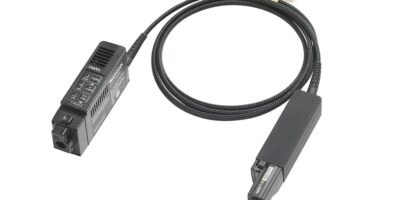IsoVu isolated oscilloscope probes extend technology to power systems
Second generation IsoVuTM isolated oscilloscope probes, the TIVP series, extend the applications for isolated probe technology to the entire power system design, says Tektronix.
The second generation probes are smaller size in the original version, and offer improved ease of use, and enhanced electrical performance, says Tektronix.
Accurate measurements on high-speed ungrounded systems can be nearly impossible using traditional differential probes, says the company. Engineers working with wide bandgap technologies such as SiC and GaN also face challenges to accurately measure and characterise devices due to the higher frequencies and switching speeds of these technolgies. The first generation of IsoVu probes were galvanically isolated from the oscilloscope, allowing power researchers and designers to make wide bandgap power measurements.
When they were introduced, they allowed engineers an insight into the performance of the high side of half bridge designs, eliminating a significant blind spot, explained Suchi Rinivasan, general manager of Tektronix Mainstream Solutions.
“With this second generation of IsoVU, we are making this cutting edge isolated measurement technology accessible to a broader range of customers for such tasks as product level R&D, validation and EMI troubleshooting,” he said
The IsoVu Gen 2 probes, like Gen 1 probes use patented electro-optical technologies to capture signals and power the probes without the need for an electrical connection to the oscilloscope. Compared to traditional high voltage differential probes, IsoVu probes offer high bandwidth, dynamic range and best-in-class common-mode rejection ratio (CMRR) over the probe’s full bandwidth, Tektronix says. Non-isolated probes’ CMRR ratings derate quickly as frequency increases, making higher frequency measurements impossible. Using optical cables also allows for long cable lengths and makes the probes largely immune to EMI.
Enhancements for the IsoVu Gen 2 probes include a smaller size. They are about 20% the size of Gen 1 probes. This makes it easier for the probes to access hard to reach measurement points that were previously inaccessible. The separate controller box is also smaller and is now contained inside the probe’s compensation box.
The probes are also more sensitive, with less noise at ±50V measurements for greater visibility and voltage sensitivity in wide bandgap measurements.
Accuracy has been enhanced, with improved DC accuracy, enhanced gain accuracy over the full input range and improved temperature drift correction. All of these enhancements enable deeper characterisation of wide bandgap designs for increased energy efficiency, notes Tektronix.
There is also less tip swapping. The wider dynamic range at the sensor head means that fewer tips are required to cover the same voltage range as IsoVu Gen 1. This shortens the time needed to perform device testing, eliminates potential errors when swapping tips, and reduces cost for customers.
The TIVP Series probes are now available worldwide in bandwidths ranging from 200MHz to 1GHz.




